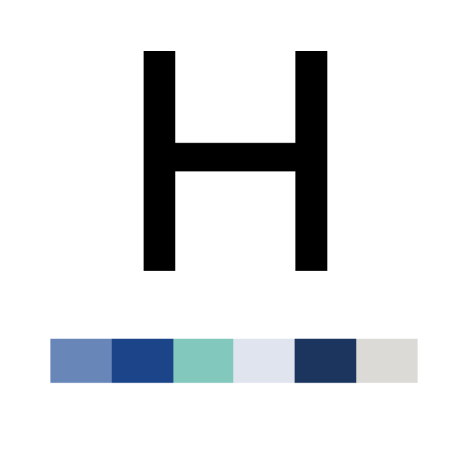Unemployment up for new graduates, but increased numbers go on to further study or training
2001/02 First desinations data published by HESA
The number of graduates entering employment has fallen this year according to data published today by the Higher Education Statistics Agency in its publication ‘First Destinations of Students Leaving Higher Education Institutions 2001/02’. The official figures show that employment has fallen from 68% to 67% and that unemployment has risen from 5% to 6%. The unemployment figures mark the first rise since HESA records began in 1994/95. The unemployment rate had been at 5% since 1997/98. The highest rate of unemployment was amongst graduates who qualified with first degrees (BA, BSc, etc) and who were living in the UK before they started their studies.
Breaking the employment figures down further shows that 64% gained employment within the UK and 3% found employment overseas. Last year 4% of graduates were in overseas employment. The increased unemployment rate has been mitigated somewhat by the report finding that the numbers continuing on to further study or training have increased from 19% last year to 20% in 2001/02. The chart below shows the breakdown of destinations for all qualifiers:

Women from the UK were most likely to find employment, particularly those at other undergraduate level (HE Diplomas and Certificates etc.) with 67% finding a job in the UK. Women with first degree qualifications who were from the UK were the most likely to go on to study or train further with 49% doing so. At postgraduate level further study would consist of postgraduate diploma and certificate courses (including PGCE’s). The table below gives more information on how destinations compare by level of qualification, gender and domicile:
| All Qualifiers by First Destination, Level of Qualification, Domicile and Gender 2001/02 | |||||||||
|---|---|---|---|---|---|---|---|---|---|
| Employment in the UK |
Employment overseas |
Undertaking study or training |
Not available for employment, study or training |
Assumed to be unemployed |
Others(1) | Total | |||
| Postgraduate | |||||||||
| Home | |||||||||
| Female | 17400 | 460 | 1085 | 580 | 490 | 110 | 20125 | ||
| Male | 10235 | 540 | 1235 | 305 | 585 | 90 | 12990 | ||
| Other EU | |||||||||
| Female | 655 | 1005 | 450 | 70 | 95 | 280 | 2555 | ||
| Male | 460 | 965 | 480 | 335 | 95 | 250 | 2585 | ||
| First degree | |||||||||
| Home | |||||||||
| Female | 66550 | 2150 | 19115 | 6070 | 5165 | 1020 | 100065 | ||
| Male | 47625 | 1725 | 13890 | 4970 | 6945 | 1170 | 76325 | ||
| Other EU | |||||||||
| Female | 775 | 600 | 1615 | 155 | 160 | 430 | 3735 | ||
| Male | 455 | 445 | 1765 | 160 | 160 | 440 | 3435 | ||
| Other undergraduate | |||||||||
| Home | |||||||||
| Female | 9025 | 60 | 3785 | 370 | 225 | 65 | 13530 | ||
| Male | 3070 | 45 | 4185 | 160 | 370 | 75 | 7910 | ||
| Other EU | |||||||||
| Female | 180 | 60 | 125 | 10 | 10 | 40 | 425 | ||
| Male | 30 | 25 | 135 | 10 | 10 | 30 | 240 | ||
| Total | 156465 | 8080 | 47865 | 13190 | 14310 | 4000 | 243910 | ||
| (1) Includes Other EU students leaving UK. | In this table 0, 1, 2 are rounded to 0. All other numbers are rounded up or down to the nearest 5 | ||||||||
The survey also examined the occupations and industries that graduates work in after leaving higher education. The majority of first degree students found employment in professional occupations, whilst relatively few took on plant and machine operative positions. There was a fairly close parity between the numbers of males and females entering the various occupation groups although 19% of women entered clerical and secretarial positions compared with only 15% of men.
When looking at the industries that first degree graduates were employed in, the property development, renting, business & research activities sector proved to be the most popular choice. Two sectors, electricity, gas & water supply and financial activities, stand out as employing large proportions of the graduates that they recruited in clerical and secretarial posts at 39% and 45% respectively.
Notes for editors
- The Reference Volume: First Destinations of Students Leaving Higher Education Institutions 2001/02 provides a statistical reference of the first destinations of students leaving Higher Education in the UK for 2001/02.
- The HESA First Destination Supplement (FDS) target population includes all UK and EU domiciled students reported to HESA for the reporting period 1 August 2001 to 31 July 2002 as obtaining relevant qualifications and whose study was full-time (including sandwich students and those writing up theses). A first destination return was not sought from those students whose study was previously part-time. The HESA FDS target population excludes non-EU overseas domiciled students. The reference date for the FDS was 3 January 2003.
- The Reference Volume is available from the Customer Services Team, HESA Services Ltd., 95 Promenade, Cheltenham, GL50 1HZ; telephone: 01242 211155. An electronic version on CD-ROM is also available. A list of other publications can be obtained from the Customer Services Team.
- HESA cannot accept responsibility for any inferences or conclusions derived from the data by third parties.
- Press enquiries should be directed to Press Officer at HESA, 95 Promenade, Cheltenham, GL50 1HZ; telephone 01242 211136.
Ends

Press Officer
